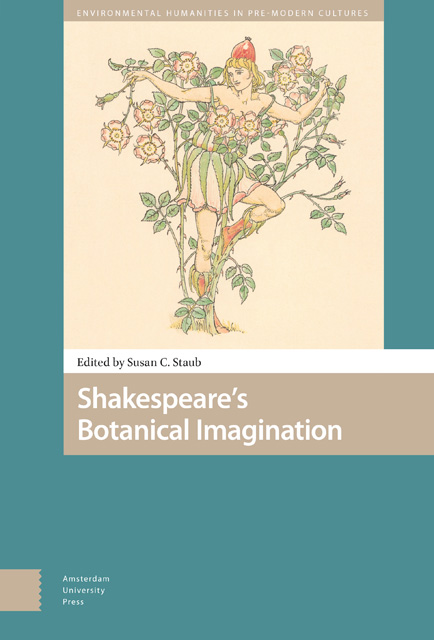5 - “Circummured” Plants and Women in Measure for Measure
Published online by Cambridge University Press: 17 October 2023
Summary
Abstract
Measure for Measure’s “garden circummured with brick” (4.1.25) resembles early modern horticultural discourse that urges gardeners to try to enclose the feminized generativity of Nature. Yet, as the play repeatedly shows, fertility is not so easy to control. Mariana and Isabella prove indistinguishable to Angelo, and it is Mariana who is, in Angelo’s words, “a deflowered maid” (4.4.20). This essay argues that the bed trick’s garden location and Angelo’s floral metaphor enact a slippage between human and plant: the bed trick becomes a flower-bed trick. Using an ecofeminist lens, I contend that Isabella’s (and Mariana’s) transformation into plant matter creates female-horticultural bodies that can resist as women with autonomy over their sexualized bodies and as plants that elude human control.
Keywords: gender, virginity, floral metaphor, horticulture, hortus conclusus, garden
William Shakespeare’s Measure for Measure (c. 1603) takes place in a series of enclosed spaces, from Vienna with its surrounding wall designating “the suburbs” from “the city,” to the friar’s cell, “the cloister” (1.2.154), “the prison” (2.3.5), “the moated grange” (3.1.254), and the various rooms inside the palace and court. The play hinges on secrets and attempts to legislate private life for the public good. Whether it is claustrophobic or claustrophilic, this play hems in its characters, both spatially and psychologically, containing them and forcing them to make impossible decisions—decisions about the female body, and more precisely, the ability of that body to remain enclosed. At the thematic and spatial center of the play is a space that is never actually staged, Angelo’s “garden circummured with brick” (4.1.25). Though there are no other spatial indicators in this relentlessly city-located play where there might be room for an ecofeminist reading, I contend that the enclosed garden of Measure for Measure, in which the offstage bed trick (the only sex in a sex-obsessed play) occurs, is the key to unlocking the secrets of the play’s obsession with enclosed female bodies. This garden is, I argue, a version of the hortus conclusus, a version supposed to contain the one female body in the play that desires to remain perpetually contained.
- Type
- Chapter
- Information
- Shakespeare's Botanical Imagination , pp. 127 - 148Publisher: Amsterdam University PressPrint publication year: 2023



